Why Square Taper Bottom Brackets?
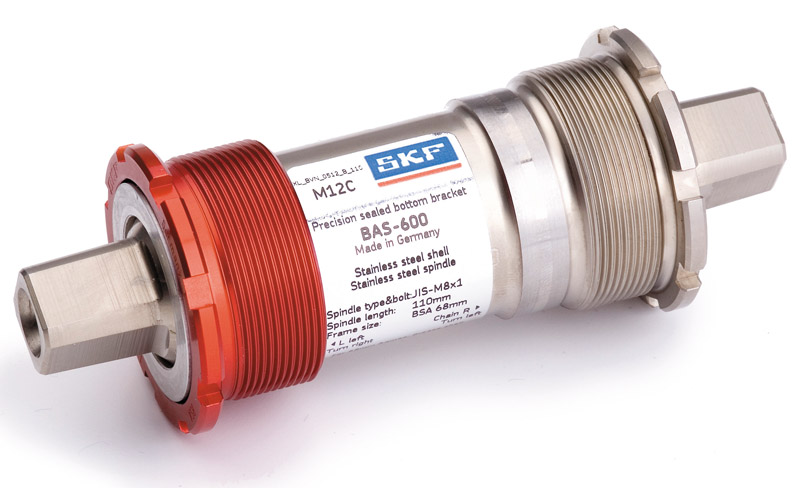
Square taper bottom brackets may seem like anachronisms dating from the last century, and yet they remain the best option for metal cranks. Here is why our Rene Herse cranks use square tapers and will continue to do so in the future.
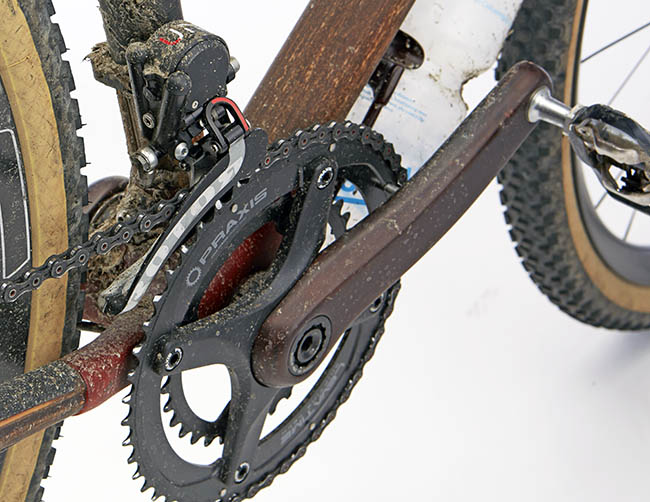
Modern bottom brackets have larger spindles, so they can use thinner walls. The result is a lighter bottom bracket – but the larger spindle requires more material on the crank.
No problem on a carbon crank (above), which needs to be large anyhow, because carbon is very light, but also bulky. Just don’t try to replicate the massive shape of a carbon crank in aluminum: It will get very heavy.
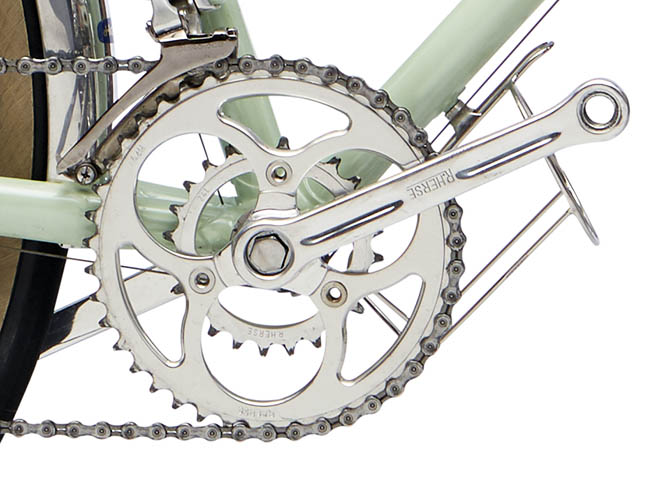
Our Rene Herse cranks are so incredibly light – just 490 grams for the 42/24 shown above – because they use only as much material as necessary. We’ve optimized the shape using Finite Element Analysis to remove all material that isn’t needed, but keeping aluminum where it’s needed for strength. The photo above shows that there is just enough material to fit a slender square taper spindle. Imagine how much material we’d have to add to make room for a massive oversized spindle!
The light weight doesn’t come at the expense of durability or safety: Our cranks pass the most stringent EN ‘Racing Bike’ test for fatigue resistance. Few other aluminum cranks are as light and as strong.
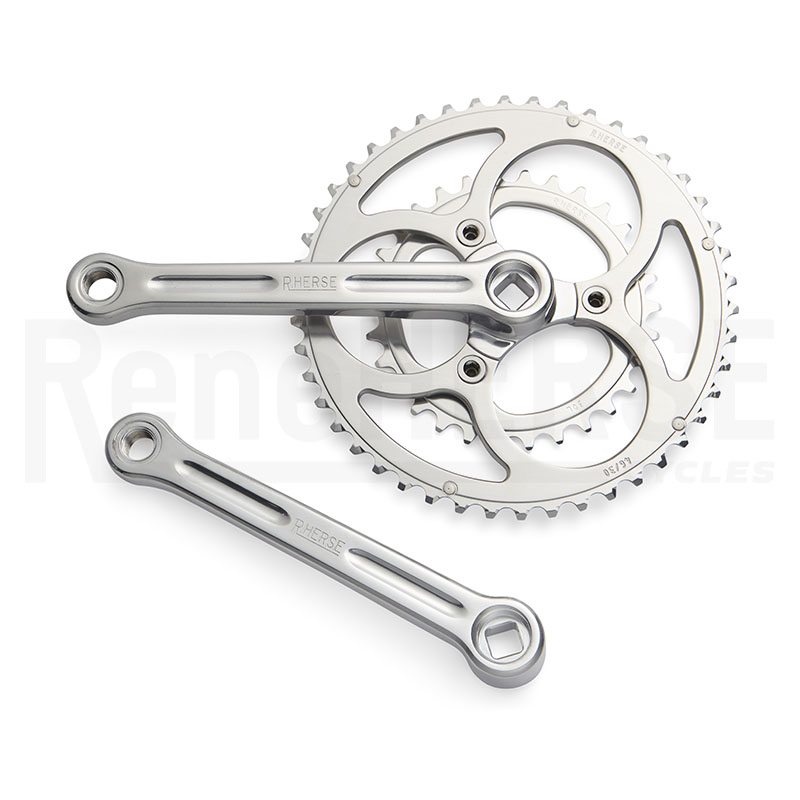
There is another benefit of square tapers: The taper reforms itself every time you install the crank. You can remove and install the cranks dozens (or hundreds) of times, yet the square tapers will not develop play. And even if a crank comes loose by accident because the crank bolt wasn’t tightened enough, you can usually reform the taper: Tighten the crank bolt as much as you can, ride the bike for 5 miles, then retighten the bolt. Do this five times, and the taper will usually be fine, unless it’s really been damaged beyond repair.
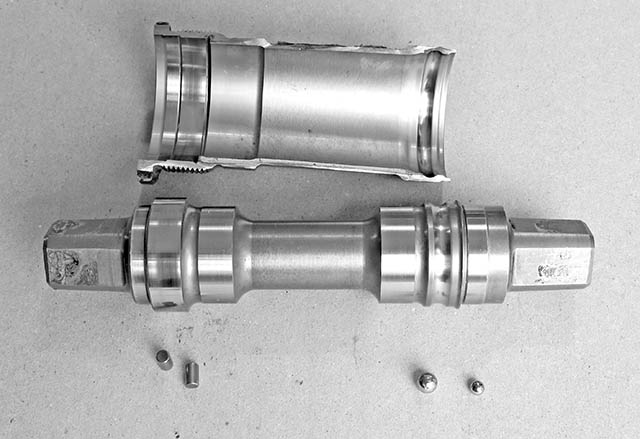
The smaller spindle of a square taper has another advantage: It leaves more room for the bearings. Above is an SKF bottom bracket that I cut open after years of use. The large ball in the center shows the size of the balls used in the SKF bottom bracket. On the right is a typical, much smaller, ball from a modern bottom bracket. (On the left you see the rollers that provide even more load capacity on the drive-side of SKF bottom brackets.)
Bike makers now work around that problem with new standards that use bigger bottom bracket shells. For carbon frames, this works fine, since you have a lot of material in the BB region anyhow. A steel frame built to a ‘modern’ BB standard will be quite heavy, as the oversize bottom bracket shell adds a lot of material. Bottom bracket shells are the heaviest part of a metal frame, so keeping them as small as possible is useful for keeping the frame weight down.
And then there is the issue of the ever-changing standards, because none work as well as the old square taper. It didn’t come as a complete surprise when Allied, the US-based maker of high-end carbon frames, decided to return to the BSC/BSA bottom bracket standard. Their web site explains: “After more than a decade of changing bottom bracket standards, we are happily back to BSA. No more creaking, easy to service and just as light as any other bottom bracket standard. Your mechanic will thank you.”
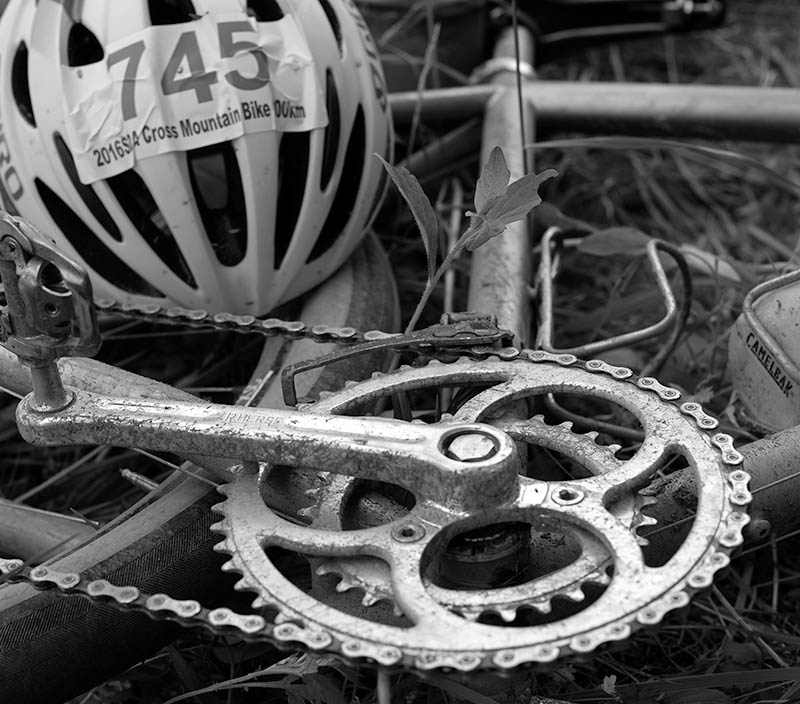
Aren’t there performance advantages with bigger spindles? In theory, the bigger spindles are stiffer. In practice, all spindles are stiff enough. Your frame flexes far more than your bottom bracket spindle. The reason why we haven’t done a double-blind test of crank stiffness is simple: It’s so pointless that it isn’t worth the effort. Eddy Merckx used square tapers, and so do the Japanese Keirin track sprinters. If they aren’t flexing them noticeably, neither will you and I! In fact, I’ve raced our square taper cranks in Unbound XL, the Arkansas High Country Race and Japan’s toughest gravel race (above) – without any issues.
It’s only for mountain biking with huge jumps – especially downhill – where the higher impact strength of larger spindles is useful. That is why we don’t recommend Rene Herse cranks for mountain bikes. On the road and on gravel, cranks don’t fail due to impact, but they fatigue after many miles of use. To resist those forces, we forge our cranks. This aligns the grain structure to make them more resistant to fatigue.
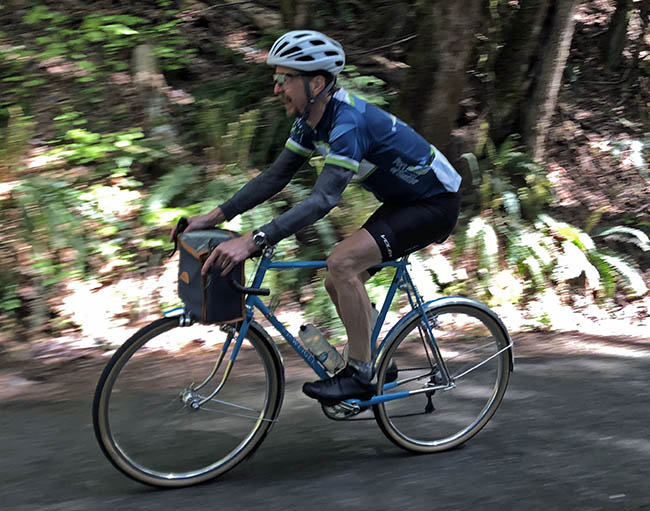
We give a 10-year warranty on our Rene Herse cranks as well as on our SKF bottom brackets. No other makers are prepared to stand behind their products for that long. This illustrates how much confidence we have in our square tapers (and the rest of our cranks and bottom brackets). We’ve spared no expense to make them as good as they could possibly be.
More information:


